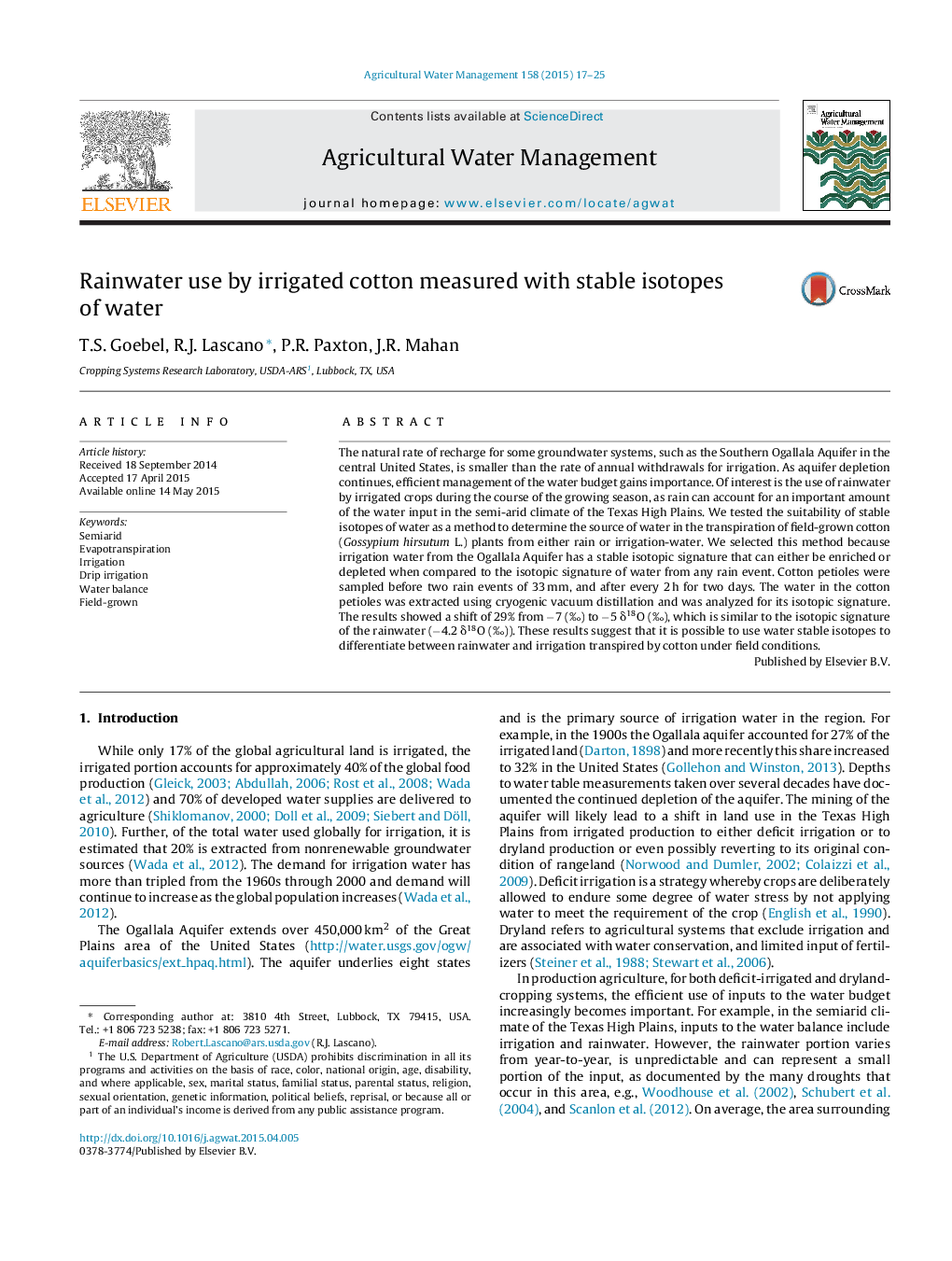| Article ID | Journal | Published Year | Pages | File Type |
|---|---|---|---|---|
| 4478417 | Agricultural Water Management | 2015 | 9 Pages |
•We measured, in irrigated cotton, root-rainwater uptake using stable isotopes of water.•The measurements were done under field conditions before and after a rain event.•Stable isotopes can be used to discriminate between rainwater and irrigation transpired by cotton.
The natural rate of recharge for some groundwater systems, such as the Southern Ogallala Aquifer in the central United States, is smaller than the rate of annual withdrawals for irrigation. As aquifer depletion continues, efficient management of the water budget gains importance. Of interest is the use of rainwater by irrigated crops during the course of the growing season, as rain can account for an important amount of the water input in the semi-arid climate of the Texas High Plains. We tested the suitability of stable isotopes of water as a method to determine the source of water in the transpiration of field-grown cotton (Gossypium hirsutum L.) plants from either rain or irrigation-water. We selected this method because irrigation water from the Ogallala Aquifer has a stable isotopic signature that can either be enriched or depleted when compared to the isotopic signature of water from any rain event. Cotton petioles were sampled before two rain events of 33 mm, and after every 2 h for two days. The water in the cotton petioles was extracted using cryogenic vacuum distillation and was analyzed for its isotopic signature. The results showed a shift of 29% from −7 (‰) to −5 δ18O (‰), which is similar to the isotopic signature of the rainwater (−4.2 δ18O (‰)). These results suggest that it is possible to use water stable isotopes to differentiate between rainwater and irrigation transpired by cotton under field conditions.
